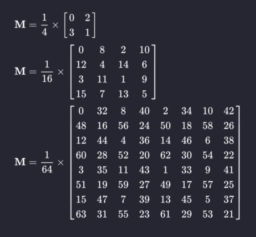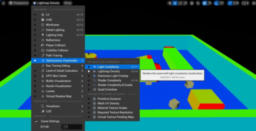- the article presents a couple of methods that can be used to read vertex information from shaders
- shows the more flexible approaches enabled by Vulkan/D3D12
- presents how more modern approaches allow data quantization
- shows the effect of different quantization formats on precision and how to choose which one to use

- the article discusses an approach for the calculation of sun-soft shadows
- the solution uses a 16x16 software rasterize per fragment to establish occlusion
- presents performance numbers, limitations as well as possible improvements

- the video tutorial presents how to use Mesh Optimizer to optimize meshes for faster rasterization
- shows five different types of optimizations (duplicated vertices, vertex cache, overdraw, vertex buffer optimization, as well as draw simplification)

- The I3D conference for 2024 is looking for papers
- the page lists important dates and the submission process

- the tutorial provides a brief overview of matrix operations
- covers matrix types, how to fill it with data, and how to express different operations

- the guide provides a collection of reference materials for different black hairstyles and advice for improving the look
- GitHub provides reference images, textures, and 3D meshes for the presented hairstyles

- the talk presents an insight into the job of a technical artist
- covers what TAs tend to work on, what they need to know, and how to learn
- additionally covers how to get started on the journey of becoming a technical artist

- AMD released a performance guide that helps developers with profiling work when using UE
- covers command line options for predictable results, how to create test cases, and enable profiling tool support
- provides some pointers for getting started with profiling for systems such as Nanite, Lumen, and upscaling
- additionally provides practical examples to showcase the effect of the optimizations

Thanks to Lesley Lai for support of this series.
Would you like to see your name here too? Become a Patreon of this series.